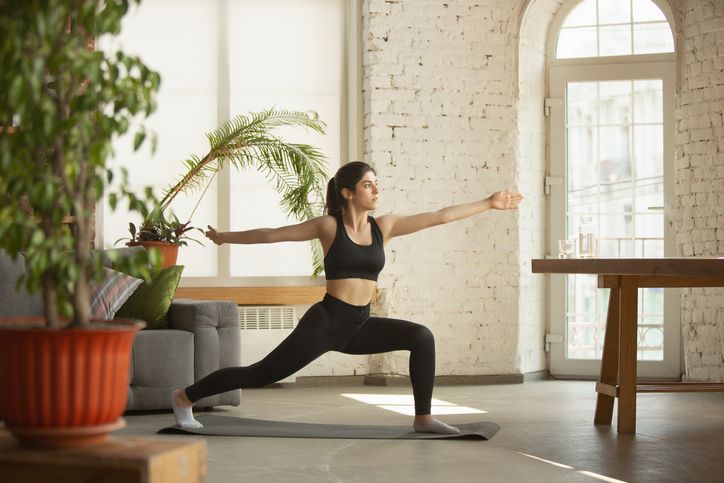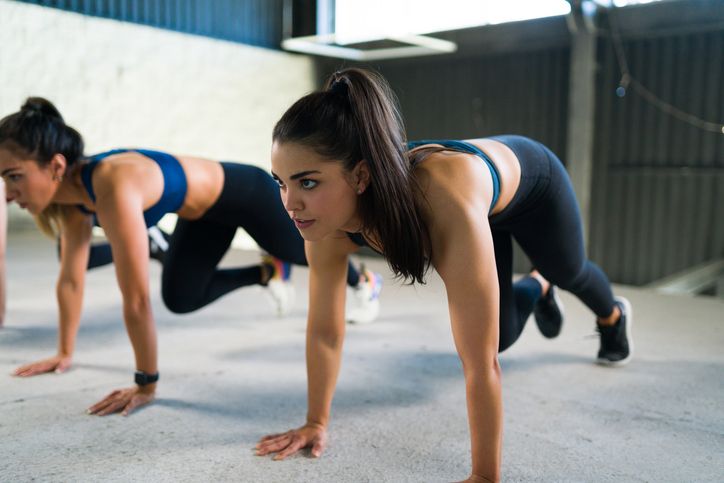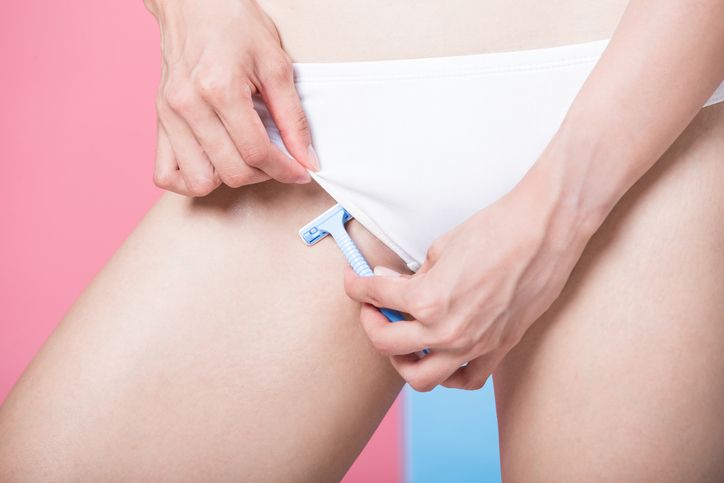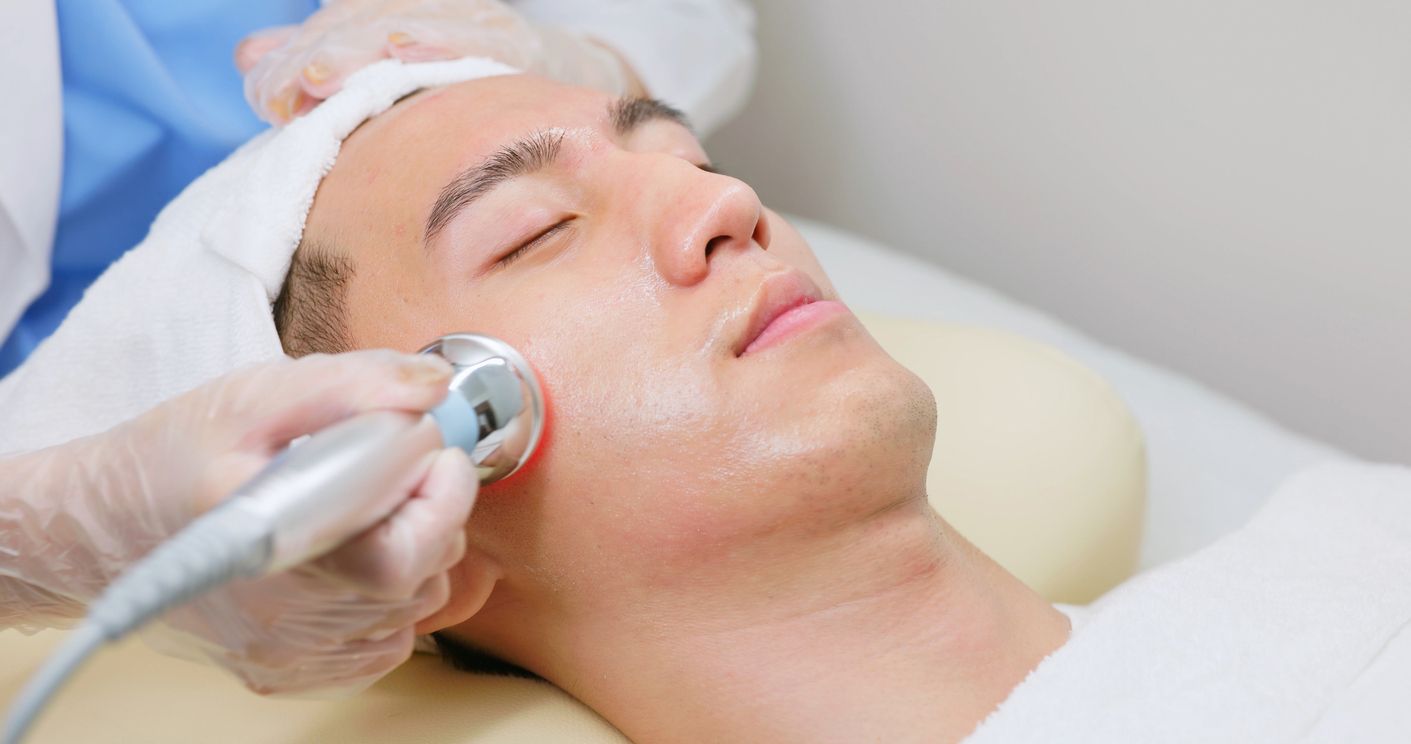- Home
- Trend
- Weight Loss Strategies
- Acne Tips
- Hair Health Information
- Blemish Removal Tips
- Acne Scar Removal Tips
- Muscle Building Techniques
- Intimate Care Tips
- Postpartum Intimate Care
- Eye Bags Wiki
- Tips for Face Slimming
- Secret of Permanent Hair Removal
- Breast Enlargement Tips
- Cure to Snoring
- Marionette Lines
- Skin-Tightening Secrets
Botox is one of the most popular cosmetic procedures for reducing wrinkles and fine lines, offering a quick, non-surgical way to refresh your appearance. However, if you’re a fitness enthusiast, you might be wondering, "How long after Botox can you workout?" or "Can you exercise after Botox without affecting results?"
The short answer: You need to be cautious. While Botox is a minimally invasive treatment, exercising after Botox too soon can impact its effectiveness. In this guide, we’ll break down how soon you can exercise after Botox, what types of workouts are safe, and how to ensure optimal results while maintaining your fitness routine.
The Immediate Aftermath: What Happens Right After Botox?

Before diving into workout restrictions, it’s essential to understand what happens after receiving Botox injections and why timing matters when returning to your fitness routine.
How Botox Works in the Body
Botox, or botulinum toxin type A, is a neurotoxin that works by temporarily relaxing targeted muscles. It blocks the nerve signals responsible for muscle contractions, preventing movements that contribute to wrinkles like crow’s feet, forehead lines, and frown lines.
However, Botox does not provide instant results. Once injected, it gradually binds to nerve endings and starts taking effect over the next 24 to 48 hours. The full impact of Botox becomes visible within 10 to 14 days, as the neurotoxin fully integrates into the treated area.
During this period, anything that increases blood flow—such as strenuous exercise—can interfere with how Botox settles. Elevated blood pressure, excessive facial pressure, and increased circulation may cause Botox to migrate from its intended location, potentially affecting unintended areas and leading to weakened results. This is why many people ask, “How long after Botox can I workout?”—because getting the timing wrong can lead to less than ideal results.
Common Side Effects in the First 24 Hours

Most people experience minimal downtime after receiving Botox injections, but some side effects may occur within the first 24 hours. These effects are generally mild and temporary, but engaging in vigorous exercise too soon can worsen them or prolong their duration.
Typical Post-Botox Reactions
Redness or swelling at the injection site – This is a normal response as the body reacts to the injection process. Increased blood flow from exercise post-Botox can make the redness last longer.
Bruising – Botox is injected with a fine needle, but small blood vessels may still be affected. Any activity that increases blood pressure—including strenuous exercise—can make bruising more pronounced.
Mild headache – Some patients report mild headaches due to needle placement or muscle adjustments. Dehydration from exercise may worsen this symptom.
Temporary muscle weakness – Since Botox works by relaxing targeted muscles, slight weakness in the treated area is normal. However, excessive movement, like performing facial exercises or high-intensity workouts, can interfere with Botox’s intended function.
Given these potential reactions, most doctors recommend refraining from high-impact physical activity for at least 24 to 48 hours. This waiting period allows Botox to settle properly and reduces the risk of unintended side effects.
免費體驗
Thermage FLX 5th Generation Face Lift Treatment
1 Minute Self-Registration
Date should not be before minimal date
How Soon Can You Exercise After Botox?

One of the most common concerns after receiving Botox injections is how soon it’s safe to resume exercise. Many people worry about whether working out too soon will interfere with Botox results or cause complications like Botox migration. The answer depends on multiple factors, including the type of exercise, your body’s reaction to the treatment, and the specific areas Botox was injected.
Why Exercise Timing Matters
Botox takes time to settle into the treated area and start working effectively. Since exercise increases blood flow, engaging in strenuous activity too soon after the procedure may cause Botox to spread beyond the targeted muscles. This can lead to weakened results, unintended muscle relaxation, or asymmetry in facial features. Additionally, intense workouts can contribute to excessive sweating, which may increase the risk of irritation or infection at the injection site.
Another factor to consider is elevated blood pressure. When you engage in high-intensity exercise, your cardiovascular system works harder, causing blood pressure to rise. This can disrupt the settling process of Botox and potentially diminish its effectiveness.
The General Waiting Period
To minimize risks and ensure optimal results, most medical professionals recommend following this general timeline before resuming different types of physical activity:
• Light exercise (e.g., walking): 24 hours
• Moderate exercise (e.g., strength training): 48 hours
• Vigorous exercise (e.g., running, HIIT, weightlifting): At least a week
• Hot yoga, saunas, and hot tubs: At least a week
If you experience any unusual side effects—such as uneven muscle relaxation, prolonged bruising, or Botox wearing off too soon—it’s best to consult your provider before resuming your fitness routine.
What Can Happen If You Exercise Too Soon?

Many people who love fitness worry about how quickly they can return to their workout routine after Botox. A common concern is, "I went running after Botox—did I ruin my results?" While a single workout may not completely reverse the effects of Botox, exercising too soon can lead to undesirable complications that may impact the treated area and final Botox results.
One major risk is Botox migration, where the neurotoxin spreads beyond the targeted muscles, leading to unintended effects such as asymmetry or temporary drooping—especially around delicate areas like the eyebrows or eyelids. Since exercise increases blood flow, working out too soon can dilute the Botulinum toxin type A before it fully binds to the nerve endings, resulting in weakened or uneven results.
Additionally, engaging in strenuous exercise too early may worsen common side effects, such as swelling, bruising, or prolonged redness at the injection site. Excessive sweating can also irritate the skin, potentially increasing the risk of inflammation or infection, particularly if you touch your face frequently during a workout.
If you experience unexpected muscle weakness, drooping, or uneven skin appearance, it’s best to consult a medical professional to determine if any adjustments or follow-ups are necessary.
免費體驗
Thermage FLX 5th Generation Face Lift Treatment
1 Minute Self-Registration
Date should not be before minimal date
Safe Workouts Post-Botox: What’s Allowed?

You don’t have to put your fitness routine on hold forever—just follow a gradual return-to-exercise approach to ensure optimal results while minimizing risks. During the first 24 to 48 hours, stick to low-impact movements that don’t increase blood pressure significantly or place excessive strain on facial muscles.
Best Post-Botox Exercises
Walking – One of the safest and most recommended activities after Botox, walking keeps your body moving without increasing blood pressure or heart rate too drastically. Since Botox takes time to settle into the targeted muscles, any activity that significantly increases blood circulation too soon can affect its distribution. Walking is a low-impact, gentle option that promotes overall well-being without interfering with Botox's effectiveness.
Gentle Yoga – Yoga can be a great way to ease back into movement after receiving Botox injections, but it’s crucial to choose the right poses. Avoid inversions, such as downward dog, headstands, or shoulder stands, as these positions increase facial pressure and blood flow to the head, potentially leading to Botox migration. Instead, stick to upright postures, seated stretches, and deep breathing exercises, which can help reduce stress without disrupting your results.
Stretching & Pilates – Both stretching and Pilates focus on controlled, low-intensity movements that don’t put excessive strain on facial muscles. Unlike high-impact workouts, which could increase blood circulation too rapidly, these activities allow you to maintain flexibility and core strength while minimizing the risk of affecting your Botox treatment. Additionally, Pilates emphasizes muscle control and stability, making it an excellent option for staying active without overexertion.
Workouts to Avoid in the First Week

To protect the longevity and effectiveness of your Botox results, it's best to avoid workouts that increase heart rate, body temperature, or facial strain for at least a week. Engaging in strenuous activity too soon could lead to Botox wearing off prematurely or migrating to unintended areas, causing uneven results.
High-Intensity Exercise (HIIT, Running, Cycling)
Workouts that involve vigorous movement, excessive sweating, and rapid heart rate elevation can increase blood circulation too quickly, potentially affecting how Botox settles in the muscles. These activities could dilute the neurotoxin’s effect, leading to shorter-lasting results or uneven muscle relaxation.
Weightlifting (Especially Movements Involving Straining or Bending)
Heavy lifting, particularly exercises that require holding your breath or exerting force (such as squats, deadlifts, and bench presses), increases intracranial pressure and facial strain.
This could push Botox away from the targeted muscles, increasing the risk of unintended effects like drooping or uneven muscle weakness. If weightlifting is part of your routine, wait at least 48 hours before light lifting and a full week before resuming heavier training.
Hot Yoga or Steam Rooms
Activities that expose you to high temperatures, excessive sweating, and prolonged heat exposure can accelerate blood flow, which may break down Botox faster than usual. Since Botox needs time to fully integrate into the muscles, it’s best to avoid anything that raises your core temperature significantly.
This includes hot yoga, saunas, steam rooms, and intense cardio in humid environments. If you're looking for a way to stay active while waiting for Botox to settle, opt for room-temperature yoga or simple stretching exercises instead.
Thermage FLX: A Botox-Free Alternative for Facial Rejuvenation
If you want tighter, younger-looking skin without the hassle of exercise restrictions or recovery time, consider Thermage FLX 5th Generation Face Lift Treatment. This advanced, non-invasive procedure delivers long-lasting skin tightening and collagen renewal—all without the need for injections.
Why Choose Thermage FLX?
Unlike Botox injections, which work by relaxing targeted muscles to reduce wrinkles, Thermage FLX harnesses radiofrequency energy to penetrate deeper skin layers, stimulating natural collagen production and skin remodeling. This makes it an ideal choice for individuals who want firmer, lifted skin without affecting muscle movement.
One of the standout benefits of Thermage FLX is its convenience—it requires no downtime. In today’s fast-paced world, most people can’t afford to take days off from their fitness routine, work commitments, or social life. Whether you have a demanding job, a busy travel schedule, or an active lifestyle, Thermage FLX lets you return to your daily activities immediately after treatment, even including vigorous exercise.
Key Benefits of Thermage FLX
• No injections, no downtime – Unlike Botox, which requires post-treatment precautions, Thermage FLX allows you to resume workouts, work, and travel right away.
• Deep skin tightening – Works on multiple layers of the skin, targeting sagging, fine lines, and wrinkles for a naturally youthful appearance.
• Long-lasting results – With just one session, you can enjoy progressive skin firming for up to 1-2 years, reducing the need for frequent touch-ups.
• Safe for all skin types – The radiofrequency technology used in Thermage FLX is FDA-approved and effective on a wide range of skin tones and textures.
If you're looking for a low-maintenance, long-term solution to aging skin, Thermage FLX is a game-changer. Book a consultation today to experience a non-invasive facelift with zero restrictions—because beauty should fit seamlessly into your lifestyle.
Perfect Medical's Thermage FLX 5th Generation Face Lift Treatment免費體驗
Thermage FLX 5th Generation Face Lift Treatment
1 Minute Self-Registration
Date should not be before minimal date
FAQ

1. Why should I avoid strenuous exercise after Botox?
Strenuous exercise increases blood circulation and raises body temperature, which can cause Botox to migrate from the treatment area before it has fully settled. Since Botox works by temporarily relaxing targeted muscles, any disruption in its placement can result in weakened effects or unintended muscle relaxation, leading to asymmetry or less-than-ideal results. Additionally, exercise-induced sweating may increase the risk of irritation at the injection site.
2. How does Botox affect physical activity, and when can I resume high-intensity interval training (HIIT)?
Botox temporarily blocks nerve signals to specific muscles, preventing them from contracting and forming wrinkles. However, engaging in high-intensity interval training (HIIT) too soon can elevate heart rate, increase blood flow, and trigger excessive facial movements, potentially causing Botox to migrate from the injection site. This can lead to weakened or uneven results, especially in areas like the forehead or around the eyes. Since HIIT involves intense bursts of activity that rapidly increase circulation, it's best to wait at least a week before resuming HIIT workouts or any other high-intensity exercises to protect your treatment results.
3. Can I lift weights after Botox, or does it involve bending and straining?
Lifting weights, particularly heavy lifting, often requires bending forward, straining, and creating facial pressure, all of which can interfere with Botox settling properly. The increased pressure and circulation from lifting can cause Botox to migrate from the intended muscles, potentially reducing its effectiveness. Additionally, certain weightlifting movements—especially those that engage core stability and require holding the breath (the Valsalva maneuver)—can put excessive strain on the face. If strength training is an important part of your fitness routine, start with light lifting after 48 hours, focusing on exercises that minimize facial tension.
4. Are there any other cosmetic treatments I should avoid after Botox?
Yes, it's best to avoid additional cosmetic treatments that could interfere with Botox’s effectiveness or irritate the skin. Treatments such as chemical peels, microdermabrasion, laser treatments, and deep facial massages can disrupt Botox’s settling process, potentially reducing its efficacy. Excessive sun exposure should also be avoided for at least a few days post-Botox, as UV rays can cause inflammation and increase skin sensitivity. Additionally, hot tubs, steam rooms, and saunas should be avoided because excessive heat can accelerate blood flow, which may cause Botox to break down faster and shorten its longevity. For best results, follow your provider’s aftercare instructions and space out any additional cosmetic treatments accordingly.
5. Is Botox safe to get during my lunch break, and what precautions should I take?
Yes, Botox is generally safe and often referred to as a lunchtime procedure because the injections take only 15 to 30 minutes and require no downtime. However, to ensure Botox settles properly, it’s important to take a few precautions after your appointment. Avoid post-Botox activities such as strenuous workouts, excessive heat exposure, or aggressive facial treatments for at least 24 hours. Additionally, try to remain upright for the next 4 to 6 hours and avoid rubbing or massaging the treated area, as this can cause Botox to migrate.









